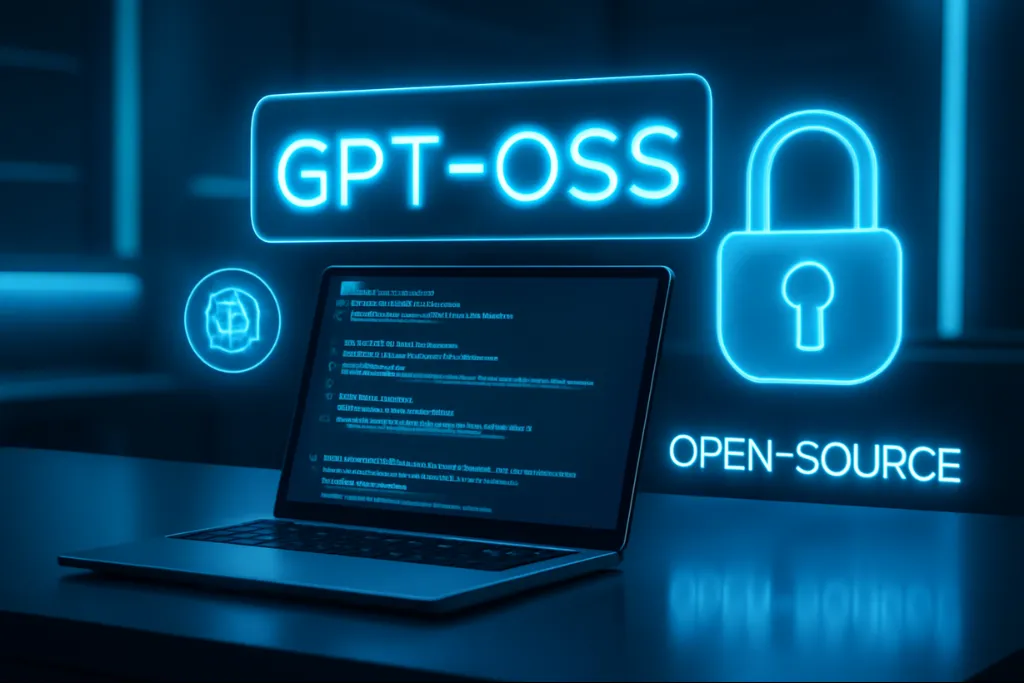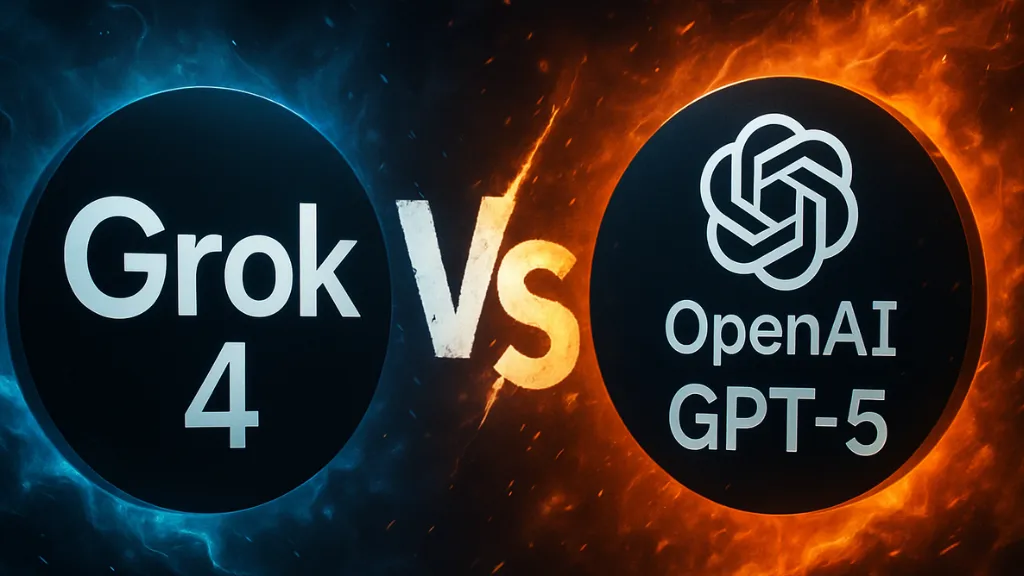Have you ever felt left behind while watching tech giants leverage AI to transform their businesses? What if I told you that OpenAI just leveled the playing field by releasing something that could change your business forever? As I researched this groundbreaking announcement, I discovered that OpenAI’s new GPT-OSS models aren’t just another tech release—they’re your ticket to joining the AI revolution without needing a computer science degree or millions in funding.
In this comprehensive guide, you’ll discover exactly what GPT-OSS means for your business, career, and future opportunities. By the end of this article, you’ll understand how to harness this powerful technology to boost your productivity, create new income streams, and stay competitive in an AI-driven world—all while keeping your data completely private and secure.
What Is OpenAI’s GPT-OSS and Why Should You Care?
GPT-OSS (OpenAI Open-Source Series) represents a historic shift in artificial intelligence accessibility. Released on August 5, 2025, this marks OpenAI’s first public release of GPT-class model weights since GPT-2, fundamentally changing who can access and use world-class AI technology.
GPT-OSS comes in two powerful versions: the gpt-oss-20b with 21 billion parameters and the massive gpt-oss-120b with 117 billion parameters. What makes this revolutionary is that both models are distributed under the permissive Apache 2.0 license, meaning anyone can download, use, modify, and even commercialize these models without paying ongoing fees.

I read through OpenAI’s technical documentation and discovered something remarkable: the 120B model achieves near-parity with OpenAI’s o4-mini on core reasoning benchmarks while running efficiently on a single 80GB GPU. Even more impressive for everyday users, the 20B model can run on consumer devices with just 16GB of memory, making advanced AI accessible to virtually anyone.
The Privacy Revolution: Why GPT-OSS Changes Everything for Business

Privacy concerns have become a major barrier to AI adoption for many businesses. Research shows that traditional AI services require sending your sensitive data to external servers, creating legal and security risks. Captain Compliance, one of the first companies to integrate GPT-OSS, highlighted this critical issue when they noted that businesses previously had to “accept certain limitations: sensitive information had to leave secure environments”.
GPT-OSS eliminates this problem entirely. Unlike ChatGPT or other cloud-based AI services, you can run GPT-OSS models completely offline, behind your own firewall. This means your business data, customer information, and proprietary knowledge never leave your secure environment.
I found real examples of companies already benefiting from this privacy advantage:
- Healthcare providers are using GPT-OSS to analyze electronic health records while maintaining HIPAA compliance
- Legal firms are processing confidential documents without exposing client information
- Financial institutions are automating compliance checks while keeping sensitive data secure
How Non-Coders Can Actually Use GPT-OSS
The biggest misconception about GPT-OSS is that you need programming skills to use it. Research shows that multiple user-friendly platforms now support GPT-OSS deployment with minimal technical knowledge required.
Getting Started Without Coding Experience
Microsoft Azure AI Foundry now offers GPT-OSS models through its platform, allowing business users to deploy these models with point-and-click interfaces. Similarly, platforms like Northflank provide “one-click deploy templates” that get you started in minutes without any infrastructure setup.
For small business owners and entrepreneurs, I discovered several practical entry points:
- LM Studio: A desktop application that lets you run GPT-OSS models locally with a simple interface
- Ollama: A command-line tool that’s become increasingly user-friendly for non-technical users
- Dell AI Factory: Enterprise-grade solutions that handle the technical complexity while giving you full control
Real-World Implementation Examples
Studies show that entrepreneurs are already implementing GPT-OSS in practical ways:
E-commerce businesses have seen a 40% reduction in customer response times by implementing GPT-OSS-powered chatbots. Unlike traditional chatbots, these AI assistants can handle complex queries while keeping customer data completely private.
Content creators and marketers are using GPT-OSS for SEO-optimized writing, blog creation, and social media content generation. The key advantage is complete control over the content creation process without worrying about data being used to train competitors’ models.
Service professionals like consultants, lawyers, and accountants are creating custom AI assistants trained on their specific expertise and client needs. This allows them to scale their knowledge and provide better service to more clients.

The Business Opportunity: Why GPT-OSS Creates New Income Streams
I researched emerging business opportunities and found that GPT-OSS is creating entirely new revenue streams for forward-thinking entrepreneurs and professionals.
AI Services as a New Business Model
Small service firms and freelancers can now offer AI consulting and implementation services to local businesses. Sources indicate that the demand for AI services is exploding, but most businesses lack the technical expertise to implement solutions themselves.
Practical opportunities include:
- Setting up custom chatbots for local restaurants, retail stores, or professional services
- Creating industry-specific AI assistants for healthcare clinics, law firms, or real estate agencies
- Offering document analysis and automation services for businesses drowning in paperwork
Fine-Tuning for Specialized Markets
Research shows that GPT-OSS’s ability to be fine-tuned on specific datasets creates opportunities in niche markets. Healthcare professionals are fine-tuning models on medical literature, while biotech companies are creating specialized research assistants.
For non-technical entrepreneurs, this means partnering with domain experts to create valuable AI solutions. A marketing professional could partner with a restaurant owner to create an AI trained on food industry best practices, customer service protocols, and menu optimization strategies.
Breaking Down the Technical Barriers: What You Actually Need
One of the biggest myths about GPT-OSS is that it requires expensive, enterprise-level hardware. My research revealed that the smaller GPT-OSS-20b model runs effectively on consumer hardware that many businesses already own.
Hardware Requirements
Studies show that you can start experimenting with GPT-OSS using:
- Basic setup: A computer with 16GB of RAM for the 20B model
- Professional setup: A high-end gaming computer or workstation with a good graphics card
- Enterprise setup: Cloud services like Azure, AWS, or specialized AI hosting platforms
Cost-Effective Implementation Strategies
I found that businesses don’t need to make massive upfront investments. Research indicates several cost-effective approaches:
Start small: Begin with cloud-hosted solutions to test and validate your use cases before investing in hardware.
Partner approach: Work with AI hosting services that specialize in GPT-OSS deployment, eliminating the need for technical expertise.
Gradual scaling: Start with the 20B model for basic tasks and upgrade to the 120B model as your needs grow.
Real Success Stories: Companies Already Winning with GPT-OSS
The most compelling evidence of GPT-OSS’s business impact comes from early adopters who are already seeing measurable results.
Healthcare and Compliance Success
Captain Compliance became the first data privacy compliance solution to fully integrate GPT-OSS, allowing it to offer “faster automation, deeper customization, and absolute control over sensitive data”. This integration has enabled them to serve clients in highly regulated industries while maintaining strict privacy standards.
Enterprise Implementation
Dell Technologies has made GPT-OSS available through their Enterprise Hub, specifically targeting businesses that need “secure, cost-effective, customizable, and high-performance” AI solutions. Their early enterprise clients are using GPT-OSS for:
- Internal knowledge management systems
- Automated document processing
- Custom chatbots for employee support
- Compliance and regulatory analysis
Small Business Innovation
Sources show that small businesses are implementing GPT-OSS for practical applications like customer service automation, content creation, and operational efficiency. Unlike expensive enterprise AI solutions, GPT-OSS allows small businesses to compete with larger companies by offering AI-powered services to their customers.
The Competitive Advantage: Why Acting Now Matters
Early adoption of GPT-OSS creates significant competitive advantages that become harder to achieve as the technology becomes mainstream. Research indicates that businesses implementing AI early see substantially better results than late adopters.
First-Mover Benefits
I discovered several advantages for early GPT-OSS adopters:
- Market positioning: Become known as an innovative, tech-forward business in your industry
- Customer acquisition: Offer AI-powered services that competitors can’t match
- Operational efficiency: Automate routine tasks and focus on high-value activities
- Data advantage: Start collecting and training on your own data to create increasingly powerful custom models
Learning Curve Benefits
Studies show that GPT-OSS requires a learning period to maximize its potential. Starting now gives you time to:
- Understand your specific use cases and requirements
- Develop expertise that becomes valuable as demand grows
- Build custom solutions tailored to your business or industry
- Create intellectual property and proprietary processes
Overcoming Common Concerns and Misconceptions
Many business professionals hesitate to explore GPT-OSS due to common misconceptions that my research shows are largely unfounded.
“It’s Too Technical for Me”
The reality is that modern deployment platforms have made GPT-OSS accessible to non-technical users. Microsoft’s Azure AI Foundry, for example, provides user-friendly interfaces that require no coding knowledge.
“It’s Too Expensive”
Research shows that GPT-OSS can actually reduce AI costs significantly. Unlike API-based services that charge per query, GPT-OSS has no recurring fees once deployed. For businesses with moderate to heavy AI usage, this can result in substantial savings.
“The Results Won’t Be Good Enough”
Studies indicate that GPT-OSS models perform at levels comparable to OpenAI’s proprietary models. The 120B model achieves near-parity with o4-mini on reasoning benchmarks, while being fully customizable for your specific needs.
Getting Started: Your Action Plan for GPT-OSS Implementation
Based on my research, here’s a practical roadmap for business professionals who want to begin leveraging GPT-OSS:
Phase 1: Education and Exploration (Week 1-2)
- Download and test GPT-OSS using user-friendly platforms like LM Studio
- Identify specific use cases in your business or industry
- Research competitors and market opportunities in AI services
Phase 2: Small-Scale Implementation (Month 1)
- Deploy GPT-OSS for a single, specific use case
- Measure results and gather feedback
- Refine your approach based on initial learning
Phase 3: Scaling and Optimization (Month 2-3)
- Expand to additional use cases
- Consider fine-tuning for your specific needs
- Explore business opportunities and partnerships
Phase 4: Advanced Applications (Month 4+)
- Develop custom solutions for your industry
- Consider offering AI services to other businesses
- Build proprietary data sets and training approaches
The Future Is Now: Why GPT-OSS Represents a Historic Opportunity
OpenAI’s release of GPT-OSS marks a watershed moment in artificial intelligence accessibility. For the first time since the early days of personal computing, powerful technology that was previously exclusive to large corporations is now available to everyone.
Research shows that this democratization of AI technology creates unprecedented opportunities for entrepreneurs, small businesses, and professionals who act quickly. Just as the internet created new industries and business models in the 1990s, GPT-OSS is poised to create similar transformative opportunities for those who understand and embrace its potential.
The key insight from my research is this: GPT-OSS isn’t just another AI tool—it’s the foundation for a new economy where privacy, customization, and local control define competitive advantage. Businesses and professionals who master these models now will be positioned to lead their industries as AI becomes increasingly central to economic success.
Whether you’re an entrepreneur looking for new opportunities, a business professional seeking competitive advantages, or someone who simply wants to future-proof your career, GPT-OSS offers a practical path forward that doesn’t require extensive technical knowledge or massive capital investment.
The AI revolution is here, and for the first time, it’s truly accessible to everyone. The question isn’t whether you can afford to explore GPT-OSS—it’s whether you can afford not to.
Also Read: AI Agent vs Agentic AI: The Ultimate Guide to Understanding These Revolutionary Technologies in 2025
Frequently Asked Questions
1. Are GPT-OSS Models Completely Free to Use?
Yes, GPT-OSS model weights are completely free to download and use under the Apache 2.0 license. This means you can use them commercially, modify them, and redistribute them without paying any licensing fees. Unlike traditional AI APIs that charge per query, once you download GPT-OSS, there are no ongoing costs—you only pay for your own computing hardware or cloud resources to run them.
2. What Hardware Do I Need to Run GPT-OSS Models?
The hardware requirements are surprisingly accessible. For the gpt-oss-20b model, you need at least 14GB of RAM/unified memory to run it in full precision, though it can work with as little as 12GB. For the gpt-oss-120b model, you need approximately 64GB of RAM/unified memory. Importantly, a GPU is not strictly required, especially for the 20B model, though having one significantly boosts inference speeds from around 10 tokens per second to 80+ tokens per second.
3. How Do GPT-OSS Models Compare to ChatGPT and Other OpenAI Models?
GPT-OSS models perform competitively with OpenAI’s proprietary models. The gpt-oss-120b achieves near-parity with OpenAI’s o4-mini on core reasoning benchmarks, while both models surpass GPT-4o in several areas including reasoning, coding, mathematics, healthcare tasks, and agentic functions. The key difference is that you get similar performance but with complete control over your data and infrastructure.
4. Can I Fine-Tune GPT-OSS Models for My Specific Business Needs?
Absolutely—this is one of GPT-OSS’s biggest advantages. The models are fully integrated with fine-tuning frameworks like trl and support both LoRA (Low-Rank Adaptation) and full fine-tuning approaches. OpenAI has provided examples showing how the models can be fine-tuned for specific tasks, such as reasoning in multiple languages. This means you can customize the models with your own industry-specific data, whether that’s medical literature, legal documents, or company-specific knowledge.
5. What’s Special About the “Reasoning” Capabilities in GPT-OSS?
GPT-OSS models are designed specifically for advanced reasoning and chain-of-thought processing. They support adjustable reasoning effort levels (low, medium, high) that allow you to balance response speed with answer quality. The models provide full chain-of-thought reasoning, meaning you can see their “thinking” process, which is invaluable for understanding how they arrive at conclusions. This makes them particularly effective for complex problem-solving, mathematical reasoning, and multi-step analysis tasks.
6. How Do I Actually Get Started with GPT-OSS if I’m Not Technical?
Several user-friendly platforms make GPT-OSS accessible to non-technical users. LM Studio provides a simple desktop interface for running GPT-OSS locally, while Ollama offers straightforward command-line tools. For cloud deployment, Microsoft Azure AI Foundry and AWS provide point-and-click interfaces for deploying GPT-OSS models without requiring programming knowledge. You can also use platforms like Together.ai for hosted GPT-OSS access with simple API calls.
7. What Are the Main Use Cases Where GPT-OSS Excels?
GPT-OSS is particularly powerful for privacy-sensitive and specialized applications. Key use cases include:
- Healthcare and biotech: Analyzing medical records and research while keeping data secure
- Agentic workflows: Building AI agents that can use tools like web search, calculators, and Python code execution
- Long document analysis: With 128k context windows, processing entire research papers or legal documents
- Custom business assistants: Fine-tuned models for specific industries or company knowledge bases
- Private AI development: Building AI applications without data leaving your secure environment
8. Are There Any Limitations or Safety Concerns I Should Know About?
While GPT-OSS offers unprecedented control, it also comes with increased responsibility. Unlike API-based models, where OpenAI can implement safety mitigations, once you download GPT-OSS, you’re responsible for implementing your own safeguards. The models are designed to follow OpenAI’s safety policies by default, but determined users could potentially fine-tune them to bypass safety measures. This means enterprises and developers need to implement their own content filtering, usage monitoring, and safety protocols when deploying these models in production environments.






